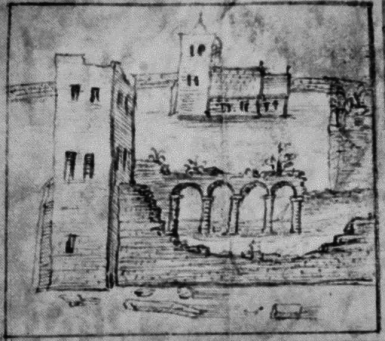Today is the Feast of St Edward the Martyr, murdered at Corfe on this day in 978. He came to be buried and venerated st the abbey of Benedictine nuns at Shaftesbury founded by his great great grandfather King Alfred.
I have posted about St Edward and his relics before. There is an online account of him at Edward the Martyr and my previous posts about him, with other links, can be seen at St Edward the Martyr from 2012, at St Edward the Martyr from 2013 and at St Edward the Martyr from 2017.

A modern stained glass roundel depicting St Edward the Martyr at Shaftesbury Abbey
Image: Country Life
The abbey itself is now no more than foundations, in which excavations continue. I posted about the recent discovery of a carved head from what is thought to have been a statue of King Edward II last year in A probable portrait of King Edward II from Shaftesbury Abbey

Ground plan of Shaftesbury Abbey
Image: british-history.ac.uk
I wonder if the rebuilding of the south chapel of the eastern arm in the late fourteenth century indicates that this was the site of the Shrine of St Edward. This might have been a similar arrangement to those at Dorchester and St Frideswide in Oxford, with a lateral chapel as the pilgrimage focus rather than one behind the High Altar.
There are histories of the abbey at Shaftesbury Abbey from Wikipedia and in more detail at House of Benedictine nuns: The abbey of Shaftesbury from the VCH Dorset
There is more about the site and the new museum at Wealth, a martyr’s bones and dissolution | Dorset Life - The Dorset Magazine and at Shaftesbury Abbey Museum and Garden | The Dorset Guide



No comments:
Post a Comment